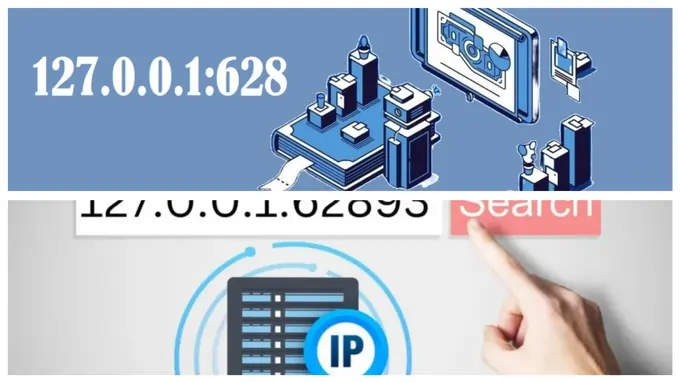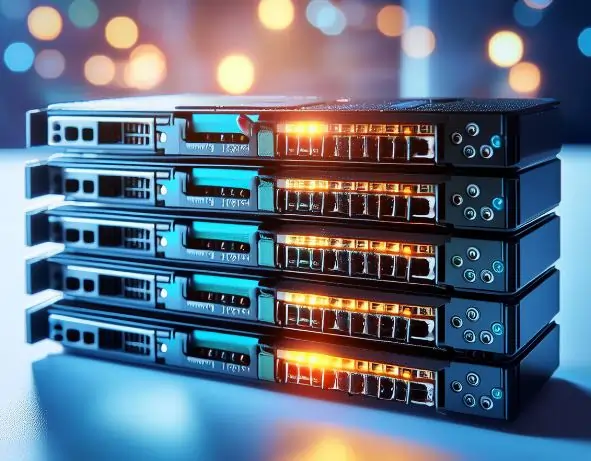
Understanding 127.0.0.1:62893 – Your Guide to Localhost Ports and Networking
Have you ever wondered why your local development projects sometimes fail to load? Or why you can’t access a website you’re building on your computer? The answer might lie in the mysterious world of 127.0.0.1:62893. This combination of numbers holds the key to unlocking smooth local development and testing. But what does it really mean, and why should you care?
127.0.0.1:62893
Welcome to the world of networking! If you’ve ever dabbled in local servers or played around with networking configurations, you’ve probably encountered the term “127.0.0.1:62893.” But what does it actually mean? Why is it important? In this guide, we’re diving deep into the concept of localhost, ports, and the specific significance of the port number 62893. Whether you’re troubleshooting an issue or just curious, this article will equip you with everything you need to know about 127.0.0.1:62893!
What is 127.0.0.1?
To understand 127.0.0.1:62893, we first need to break it down. Let’s start with 127.0.0.1, also known as the localhost or loopback address.
Definition of localhost and its significance in networking
Localhost is like your computer’s home address on the internet. It’s a special IP address that always refers to the device you’re using. When you type 127.0.0.1 into your web browser, you’re telling your computer to talk to itself.
But why is this important? Imagine you’re a chef testing new recipes. You wouldn’t want to serve untested dishes to your customers, right? Similarly, developers use localhost to test their websites and applications before making them public.
The role of IP addresses in identifying devices on a network
Every device on a network needs a unique identifier, like a house number on a street. That’s where IP addresses come in. They’re like digital addresses that help computers find and talk to each other.
The IP address range for private networks typically starts with 10, 172, or 192. But 127.0.0.1 is special. It’s reserved just for your device to talk to itself.
Why 127.0.0.1 is commonly used for local testing and development

Developers love 127.0.0.1 because it’s always available and doesn’t require an internet connection. It’s perfect for localhost testing and setting up a local server. But what about that mysterious 62893? That’s where ports come in.
Understanding Ports and Their Functionality
Explanation of network ports and how they facilitate communication
Think of your computer as a big apartment building. The IP address is the building’s street address, but how do we know which apartment (or service) to go to? That’s where ports come in.
Network ports are like apartment numbers. They tell your computer which service or application should handle incoming data. When you see 127.0.0.1:62893, the 62893 part is the port number.
The range of port numbers and their common uses
Ports range from 0 to 65535, but not all are created equal. Common port numbers include:
- 80 for HTTP
- 443 for HTTPS
- 3306 for MySQL databases
These are like the ground floor apartments everyone knows. But what about 62893?
How ports like 62893 are designated and what they represent
Ports above 49152 are called dynamic or private ports. They’re like the top-floor penthouses, often used for temporary connections or custom applications. That’s where our friend 62893 lives.
The Specifics of Port 62893

Why you might encounter the port 62893 in your projects
You might see port 62893 when you’re running a local development server or testing an application. It’s not a standard port, which means it was likely chosen randomly by your development environment.
Typical applications and services that might use this port
While there’s no specific service tied to port 62893, it could be used by:
- A web server port for your local project
- A database connection port for testing
- A custom application you’re developing
How to check if a port like 62893 is in use on your system
Curious if 62893 is being used on your machine? Here’s how to check:
- On Windows, open Command Prompt and type:
netstat -ano | findstr :62893 - On Mac or Linux, open Terminal and type:
lsof -i :62893
These networking commands will show you if any process is using the port.
Common Issues with 127.0.0.1:62893 and How to Troubleshoot Them

Problems that might arise with localhost and port conflicts
Ever tried to start your local server only to get an error saying the port is already in use? That’s a port conflict, and it’s more common than you might think.
Step-by-step troubleshooting for resolving port conflicts
- Identify the process: Use the commands from the previous section to find what’s using the port.
- End the process: If it’s not needed, end it using Task Manager (Windows) or the
killcommand (Mac/Linux). - Change the port: If you can’t end the process, try using a different port in your application settings.
Tools and commands to diagnose issues with port 62893
- Netstat: A powerful network diagnostics tool available on most operating systems.
- Port scanning tools: Applications like Nmap can help you understand what’s happening on your network.
- Wireshark: For advanced users, this tool can analyze all network traffic on your system.
Securing Your Localhost and Port 62893
The importance of securing your local environment

You might think, “It’s just localhost, why bother with security?” But remember, local development often involves sensitive data. Protecting your localhost is the first step in network security.
Best practices for preventing unauthorized access to your localhost
- Use a firewall to control access to your ports.
- Implement localhost SSL configuration for encrypted communication.
- Regularly update your development tools and environments.
How to configure firewalls and security settings for port 62893
Most operating systems come with built-in firewalls. Here’s how to configure them:
- Windows: Use Windows Firewall to create rules for specific ports.
- Mac: Use the built-in application firewall in System Preferences.
- Linux: Configure iptables or ufw to manage port access.
Practical Applications of 127.0.0.1:62893
Real-world scenarios where 127.0.0.1:62893 is used
- Web development: Testing a new website before deploying it to a live server.
- Database development: Configuring and testing database connections locally.
- API development: Creating and testing APIs without internet connectivity.
Case studies or examples of local development projects

Consider Sarah, a freelance web developer. She uses 127.0.0.1:62893 to test a client’s e-commerce site. By using localhost, she can:
- Make rapid changes without affecting the live site
- Test different scenarios without internet lag
- Ensure all features work before going live
Tips for effectively using this localhost and port configuration
- Use virtual environments: Tools like Docker can help isolate your projects and prevent port conflicts.
- Implement version control: Use Git to track changes and collaborate effectively, even on localhost projects.
- Document your port usage: Keep a record of which ports your projects use to avoid conflicts.
Diving Deeper: Advanced Localhost and Networking Concepts
Understanding the TCP/IP protocols
TCP/IP protocols form the backbone of internet communication. They define how data should be packaged, addressed, transmitted, routed, and received. When you’re working with localhost, you’re using these protocols on a micro-scale.
The difference between IPv4 and IPv6 loopback addresses
While we’ve focused on 127.0.0.1, which is the IPv4 loopback address, there’s also an IPv6 equivalent: ::1. As the internet transitions to IPv6, understanding both is crucial for comprehensive localhost development.
Virtual network adapters and their role in local development

Virtual network adapters allow you to create multiple network interfaces on a single physical device. This is particularly useful when working with virtual machines or complex networking setups in your local environment.
Optimizing Your Development Environment
Localhost vs remote host: When to use each
While localhost is great for initial development, there comes a time when you need to test on a remote host. Understanding the pros and cons of each can help you make informed decisions about your development environment setup.
Integrating localhost with cloud development environments
As cloud development becomes more prevalent, knowing how to integrate your localhost setup with cloud services can significantly boost your productivity. This might involve port forwarding or using specialized development tools.
Best practices for managing multiple projects on localhost
- Use different port ranges for different types of projects.
- Implement a local domain naming system for easier project management.
- Utilize containerization technologies like Docker to isolate project environments.
Troubleshooting Advanced Localhost Issues
Dealing with port exhaustion
If you’re working on multiple projects, you might encounter port exhaustion. This happens when all available ports are in use. Learning how to manage and recycle ports efficiently is crucial for smooth development.
Resolving localhost SSL certificate issues
Implementing HTTPS on localhost can be tricky. Self-signed certificates often cause browser warnings. Understanding how to create and properly configure SSL certificates for localhost can save you hours of troubleshooting.
Debugging cross-origin resource sharing (CORS) on localhost
CORS issues are common when developing web applications. Learning how to properly configure CORS settings on your localhost can prevent frustrating errors and ensure smooth API interactions.
The Future of Localhost Development
Emerging trends in local development practices
As technology evolves, so do development practices. Keep an eye on trends like:
- Serverless computing and its impact on local development
- Progressive web apps and their unique localhost testing requirements
- Edge computing and how it might change our approach to local vs. remote development
How containerization is changing the localhost landscape
Technologies like Docker are revolutionizing how we think about localhost. They provide consistent environments across different machines, making “it works on my machine” a thing of the past.
Preparing for the next generation of web technologies
As new web technologies emerge, our localhost setups will need to evolve. Stay ahead of the curve by:
- Regularly updating your development tools
- Experimenting with new localhost configurations
- Participating in developer communities to share knowledge and learn from others
Conclusion:
Understanding 127.0.0.1:62893 is crucial for anyone working in networking, web development, or IT. By grasping the basics of localhost and ports, and knowing how to troubleshoot and secure your environment, you’ll be better equipped to handle any issues that come your way. Whether you’re setting up a new project or debugging an old one, remember the insights you’ve gained here. Ready to dive deeper into networking? Share your thoughts or questions in the comments below, and let’s keep the conversation going!
Remember, every great application started as a localhost project. Who knows? Your next big idea might be brewing right now at 127.0.0.1:62893. Happy coding!




